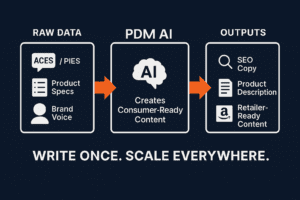Laws and regulations around the automotive industry have been a hot topic in 2024.
National attention is being paid to the automotive aftermarket thanks to aggressive legislation at the state and federal levels that requires the adoption of battery-powered and hybrid electric vehicles. For companies in the aftermarket that produce components for internal combustion engines or participate in motorsports, this shift towards non-gasoline-powered cars could impact their business.
In addition to laws around electric vehicles, issues such as the Right to Repair and federally mandated access to outdoor vehicle recreation areas are also shaping the industry in 2024.
As of May 2024, many of the issues listed here are still in flux, but we’ll be sure to provide any updates as they occur.
EPA Multi-Pollutant Emissions Standards for Model Years 2027 and Later Light Duty and Medium-Duty Vehicles: Final Rule
Thanks to a long list of benefits, aftermarket manufacturers are looking for ways to increase production while lowering their environmental impact.
The production and distribution of aftermarket parts often lead to significant environmental challenges, including high energy consumption and greenhouse gas emissions from manufacturing processes and logistics. Additionally, the industry grapples with waste management issues, as many parts are not designed for recycling or reuse, contributing to growing amounts of landfill waste.
Building a sustainable culture shows stewardship for Mother Earth and helps create a community of enthusiasts who share the same credo. Beyond the intrinsic benefits of sustainability, manufacturers may also experience more efficient production processes that lead to cost reductions, additional investment opportunities, and a continued spirit of innovation that brings in high-caliber talent from across the globe.
Let’s dig into some of the most effective ways for manufacturers to increase their sustainability profile.
Sustainable production of aftermarket parts
Whether producing your parts in your factories or outsourcing their production, the best place to look for opportunities to increase sustainability is right on the factory floor.
Eco-Friendly Materials
In the production of aftermarket parts, the adoption of eco-friendly materials is crucial for reducing environmental impact.
This includes using recycled materials, such as metals from end-of-life vehicles and plastics, that can be reprocessed into new components. Additionally, manufacturers are exploring renewable resources, such as bio-based plastics derived from biological sources rather than petroleum. By integrating these materials, companies minimize the depletion of finite resources and reduce the energy consumption and carbon emissions associated with extracting and processing virgin materials.
The challenge lies in ensuring that these eco-friendly materials meet the same performance standards as traditional materials, which requires innovation and testing.
Energy efficiency in manufacturing
Enhancing energy efficiency in manufacturing facilities is another vital step toward sustainability in the aftermarket parts industry.
This can be achieved by investing in renewable energy sources, such as solar panels and wind turbines, to power production operations. Many companies are upgrading to more energy-efficient machinery and lighting systems, significantly reducing electricity consumption. Implementing smart energy management systems can further optimize energy use by monitoring real-time consumption and adjusting operations accordingly.
These practices lower the carbon footprint of manufacturing processes and result in substantial cost savings over time.
Waste reduction techniques
Minimizing waste in producing aftermarket parts involves several strategies to enhance efficiency and reduce resource consumption.
One approach is to optimize material usage through advanced planning and precision manufacturing techniques, which ensure that materials are used effectively with minimal offcuts and scrap. Recycling scrap materials within the factory is another crucial practice; metal shavings, plastic remnants, and other by-products can often be reprocessed and reused in the manufacturing cycle. Additionally, adopting lean manufacturing principles helps streamline operations and reduce waste by focusing on continuous improvement and eliminating non-value-added activities.
These waste reduction techniques contribute to environmental sustainability, improve operational efficiency, and reduce production costs.
Sustainable Distribution Methods
Optimized logistics
Optimizing logistics is essential in reducing the carbon footprint of distributing aftermarket parts.
One effective strategy is route optimization, which uses software to determine the most efficient delivery routes, reducing travel distance and fuel consumption. Additionally, companies can switch to electric or hybrid delivery vehicles that produce fewer emissions than traditional gasoline or diesel vehicles. GPS tracking and real-time traffic updates can enhance route efficiency, ensuring drivers avoid congested areas and reduce idle time.
These efforts contribute to environmental sustainability and lead to significant cost savings in fuel and maintenance.
Packaging innovations
In the realm of packaging, innovative materials play a crucial role in sustainability efforts.
Using biodegradable packaging, such as cornstarch or mushroom-based materials, ensures that packaging breaks down naturally without leaving harmful residues. Alternatively, using recyclable materials like cardboard and certain plastics allows the packaging to be reprocessed and reused, reducing the need for virgin materials. Companies are also adopting minimal packaging designs, reducing the overall material used and focusing on essentials without compromising product protection.
These innovations help decrease waste sent to landfills and lower the environmental impact of packaging.
Collaborative distribution
Collaborative distribution offers a strategic approach to minimizing logistics-related emissions.
Multiple businesses can optimize shipment volumes by sharing transportation resources, such as delivery trucks and distribution centers, leading to fewer trips and decreased emissions. This method reduces each company’s carbon footprint, lowers transportation costs, and improves delivery efficiency. Collaborative logistics can also extend to shared investments in technology, such as advanced fleet management systems, which further enhance operational efficiency.
Such partnerships are particularly beneficial in crowded marketplaces or among businesses with overlapping delivery routes, ultimately contributing to a more sustainable distribution network.
Regulatory compliance and industry standards
Aftermarket manufacturers must adhere to a wide variety of regulatory requirements and can choose to participate in advanced certifications and standards that set their businesses apart.
Environmental regulations
The aftermarket parts industry is subject to various environmental regulations that aim to minimize the ecological impact of manufacturing and distribution processes.
These regulations may include restrictions on using certain hazardous materials, requirements for emissions control, and mandates for recycling materials and waste products. Compliance with these regulations is critical, as non-compliance can result in fines, legal penalties, and reputational damage. Manufacturers must stay informed about these regulations and adapt their operations accordingly to ensure sustainability and legal compliance.
Certifications and standards
Adhering to certifications and standards, such as ISO 14001, is crucial for aftermarket parts manufacturers aiming to implement sustainable practices.
ISO 14001 is a prominent standard focusing on effective environmental management systems. It helps organizations improve their environmental performance through more efficient resource use and waste reduction. Achieving ISO 14001 certification demonstrates a company’s commitment to environmental stewardship and provides a competitive edge in the marketplace by enhancing credibility with customers and stakeholders.
Role of industry associations
Industry associations like the Auto Care Association are pivotal in promoting sustainability within the aftermarket parts industry.
They facilitate the development and implementation of industry-wide sustainability standards and practices. Associations often provide resources, training, and networking opportunities to help members adopt these practices. They also advocate on behalf of the industry for reasonable regulatory standards and support research and initiatives that advance sustainability. Their influence helps the industry move collectively towards more sustainable practices, elevating its overall environmental performance.
Future trends and innovations
Emerging technologies in the aftermarket parts industry are set to revolutionize how companies approach sustainability.
Innovations such as 3D printing are already reducing waste by allowing precise production that limits excess materials. Advanced robotics and AI-driven systems streamline manufacturing processes, enhance energy efficiency, and lower emissions. As these technologies become more integrated, they will significantly reduce the environmental impact of production and distribution.
Looking ahead, the industry is poised to transform into a model where sustainability becomes a central pillar of business operations. Companies will increasingly adopt a circular economy model, prioritizing the recyclability and reusability of parts. The continuous improvement ethos will be vital, as businesses must remain agile, constantly adapting to new regulations and environmental standards.
This ongoing innovation will help companies stay competitive and contribute to global efforts in reducing ecological footprints, marking a proactive shift towards a more sustainable and responsible aftermarket parts industry.

More Resources
2024 laws and regulation changes that may affect the automotive aftermarket
What is a PIM and and why it is important for aftermarket brands
Understanding the role of certifications and standards in aftermarket parts quality



